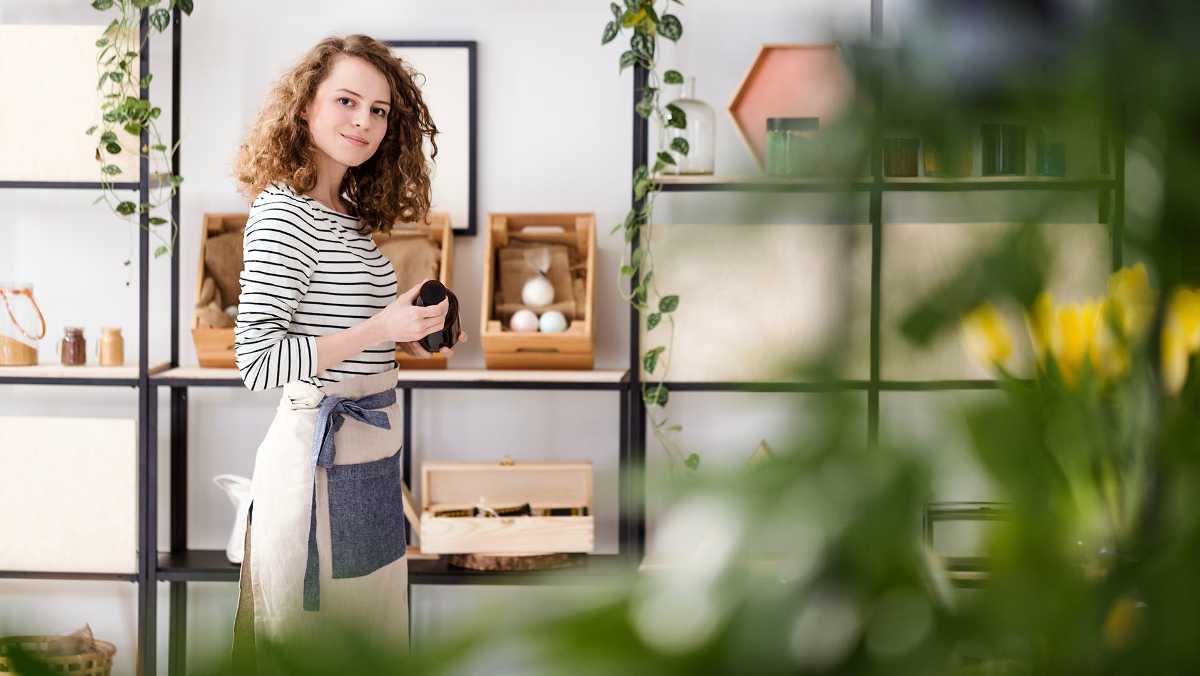How to start a pop-up shop

- Henk Herkink
- How to
- 4 March 2020
- Edited 27 November 2024
- 2 min
- Starting
A pop-up store is a shop that exists for a short time. You can often buy special products or products of which only a small number have been made. Are you planning to start a pop-up shop? Read what to look out for.
What do you need to do and arrange when starting a business?
Find out with the 'Personal to-do list' on Business.gov.nl. Answer the questions and see the steps that are important in your situation.
Advantages of a pop-up shop
Opening a pop-up shopcan be smart if, for example, you have a webshop, have bought up a large quantity of stuff or if you have a new product. You look for a storefront that is empty and sell your stuff there temporarily.
These are advantages of opening a pop-up store:
- A newly opened shop attracts attention. This is how you increase brand awareness.
- Do you have an online shop? In your pop-up store, customers can see, feel and try the products.
- A pop-up store only exists for a short time. Customers are more likely to buy because they are afraid the store will soon be gone.
- In your pop-up store, you can test how customers react to new products.
How much does a pop-up store cost?
The costs of starting a pop-up shop vary per city and municipality. Negotiate the rent and have a lawyer check the rental agreement. Make sure you make a financial plan in advance. That way you will know whether your plans are financially viable.
What do you need to arrange?
Opening a pop-up store is actually the same as opening your own shop. There are different laws and regulations for shops.
In addition, you need to arrange the following things:
- insurance
- payment methods
- furnishing
- stock and transport
- staff
- electricity, gas, water, internet
- licences and permits
- waste and recycling
Choosing a suitable location
A suitable location for your pop-up shop can be found through estate agents or the municipality, for example. They know which premises are empty or will soon become vacant. Tell others about your plans. Maybe they will give you a tip on a suitable building.
Check online specialist networks such as popupplaza.nl (in Dutch), ruimtetehuurtekoop.nl (in Dutch), and loggersconsultancy.nl (in Dutch). They help you find a suitable space. Check out train stations in your area. Maybe you can lease a space there. The Dutch public transportation company NS rents out temporary retail spaces at train stations (in Dutch) to entrepreneurs.
Please note: When looking for suitable retail space you must also consider the difference between small and medium-sized enterprises and other commercial spaces. Sometimes renting out is through a user agreement instead of a lease. With a user agreement, you pay the landlord a small fee to use the property. Bear in mind that with a user agreement, you may not be entitled to rent protection. Have your agreement checked by a lawyer so you know what your rights and obligations are.
Other things to consider
Think about these issues:
- Where your target audience is. Do they live in a small village in the countryside or in a big city?
- Surrounding stores. Are they competitors or do you complement each other?
- Consumer traffic in the shopping street. Consumer traffic, also called foot traffic, is the number of customers who walk through the area. Study the consumer traffic in the area every day for a week.
- The number of m2 that you need.
- How long you want to lease the space; a week, a month, 2 months, or longer?
Use the KVK Location Scan (in Dutch) to check what the market and target group are like in the region where you want to do business.
4 ways to stand out
How do you make sure your pop-up shop stands out and attracts customers? 4 tips:
- Use large banners. Cover the entire shop window with large banners right before opening. It stands out, makes people curious, so they want to see what is inside.
- Approach local papers and media. They are always looking for news and stories from the region.
- Do you already have a webshop? Use its brand awareness. Some people like to see and feel products. They might not buy from your webshop, but they might buy from a pop-up store.
- Work together with other shops. Display their products in your pop-up store, and vice versa. Customers enter shop A and then move on to shops B and C, and vice versa. An example: working together with a beauty salon and clothes store. The overall concept for Uppark would then be shoes, clothes, and perfume. Make sure the overall concept suits your retail segment or sector.


